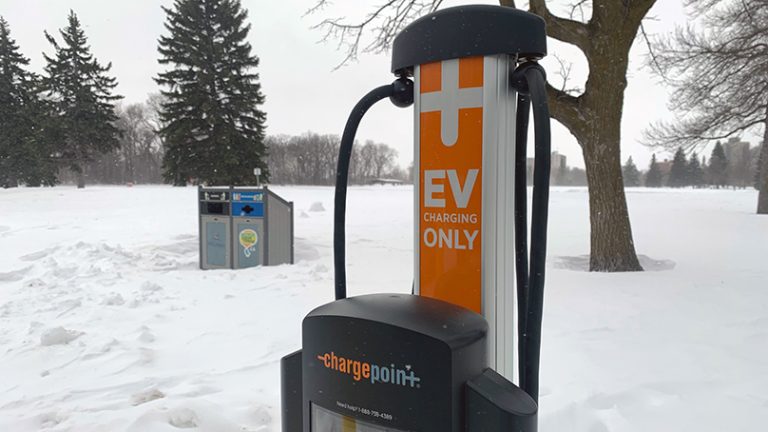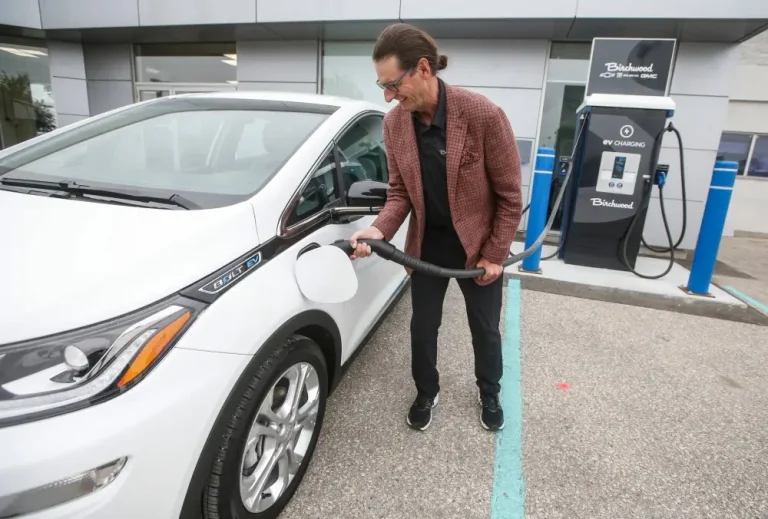In winter months, electric vehicle (EV) owners face a common concern of reduced range in cold weather conditions. While EVs offer many benefits, including zero emissions and lower operating costs, colder temperatures can affect their battery performance and diminish range. Let’s explore why electric vehicle range is reduced in the winter and give some tips on how to mitigate the impact of cold weather on your EV’s range!
Understanding Winter Range Reduction
In freezing conditions, the average electric vehicle can lose 20-30% of its range, but it highly depends on the model you’re driving. This is manageable for the average driver to make it through their day but may not work if you’re extensively travelling. Comparatively, gas vehicles also lose around 10-20% of their range, meaning this is an issue for both electric and gas vehicles in winter.
Here is a list of reasons why EV range is reduced in winter:
Battery Performance:
One reason for reduced range are lithium-ion batteries, which power most electric vehicles and are sensitive to temperature changes. Cold weather can cause the chemical reactions within the battery to slow down, reducing its overall energy output. As a result, the available energy stored in the battery decreases, leading to shorter driving range.
Heating Systems:
Operating the cabin heating system in cold weather requires additional energy from the battery. EVs rely on battery power to provide heat for the interior, to defrost windows, and to warm up the cabin. The energy used for heating reduces the amount of energy available for driving, resulting in decreased range. This is not something to be alarmed about, as it is very similar to how more gas is used to heat a traditional gas vehicle in the winter months.
Tire Pressure:
Cold temperatures also cause tire pressure to drop, which can increase tire rolling resistance. Tire rolling resistance is the energy that your vehicle needs to use for your tires to maintain movement at a consistent speed. Higher rolling resistance requires more energy to propel the vehicle forward, reducing your overall range.
Battery Warm-Up:
In cold weather, EV batteries may require additional time to warm up to their optimal operating temperature. Until the battery reaches its ideal temperature, its performance may be limited, further reducing range. However, when using the preconditioning feature, you can warm your EV up while it is still charging, which we’ll talk about below.

Tips to Increase Your Range in Winter
Luckily there are things you can do to prepare your vehicle for winter and mitigate the loss of range. Here are some solutions:
Preconditioning:
Preconditioning is an innovative feature on electric vehicle used to warm up the cabin while the vehicle is still plugged in. Preconditioning helps conserve battery energy by using external power to heat the interior, allowing you to maximize your range and start your drive with a warmer cabin and no frosted windshield!
Manage Cabin Heating:
Optimize your use of cabin heating to minimize energy consumption. Use seat heaters and steering wheel warmers when possible because they require less energy than heating the entire cabin. Set your inside temperature to a comfortable level and use eco or low-power mode to reduce the heating load, save energy, and preserve your range.
Plan Efficient Routes:
Plan your trips to minimize energy consumption and maximize range. Use navigation apps or EV-specific route planners to identify charging stations along your route and optimize your driving speed to conserve energy. An example is Plugshare, a free app that helps electric vehicle drivers find charging stations and plan their routes.
It is also important to avoid unnecessary idling and aggressive driving, which can drain the battery quicker.
Maintain Tire Pressure:
Check your tire pressure regularly and ensure it meets your manufacturer’s recommendations. Properly inflated tires can reduce rolling resistance and improve your overall efficiency, helping to maximize your EV’s range in cold weather.
Charge Smartly:
Take advantage of opportunities to charge your electric vehicle whenever possible, especially in cold weather when range may be limited. Consider installing a home charging station to ensure your EV is fully charged and ready for use each day. Remember that in cold temperatures your charging time can also be reduced, so plan accordingly.
Battery Care:
Park your EV in a garage or use a battery blanket to help maintain optimal battery temperature in cold weather. Avoid exposing the vehicle to extreme temperature fluctuations, which can potentially degrade battery performance over time.

Yes, electric vehicle range is reduced in the winter, but don’t worry! There are many things you can do to mitigate the impact of cold weather on range and enjoy reliable EV performance throughout the winter months. With proper planning and vehicle use, EVs remain a practical and eco-friendly transportation option year-round! Feel free to reach out to us to learn more!


